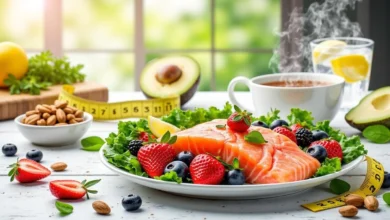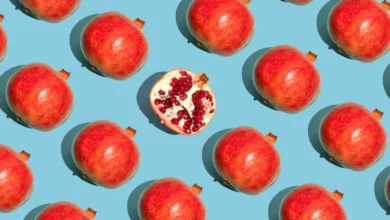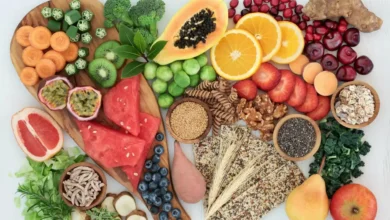
Fiber is one of the most vital nutrients for maintaining good digestive health, stabilizing blood sugar, and supporting a healthy heart. While dates are often celebrated as a rich source of fiber, there are many foods that actually contain much more — and they can easily fit into your daily diet for a delicious and nutritious boost.
READ ALSO:
- Quick Exercise for Lower Back Pain Relief: Simple Moves That Work
- Does Running Help You Lose Weight? How to Start and Progress Without Losing Your Breath
Follow our PAGE
What Is Fiber and Why It Matters
Fiber is a type of carbohydrate that the body cannot fully digest. Instead of breaking down into sugar, it passes through the digestive tract, helping clean the intestines and keeping digestion regular. Fiber is divided into two types — soluble fiber, which absorbs water and slows digestion, and insoluble fiber, which adds bulk and prevents constipation. Both are essential for optimal gut and metabolic health.
How Fiber Supports the Body
Eating enough fiber daily has a range of benefits that go far beyond regular bowel movements.
Improves Digestive Health
Fiber keeps the digestive system running smoothly by adding bulk to stool and feeding beneficial gut bacteria. A diet rich in fiber can prevent constipation and support long-term colon health.
Balances Blood Sugar
Soluble fiber slows the absorption of sugar into the bloodstream, helping prevent spikes and crashes in blood glucose levels. This makes high-fiber foods a smart choice for managing or preventing diabetes.
Supports Heart Health
Fiber binds to cholesterol particles and helps remove them from the body, lowering overall cholesterol and supporting a healthy cardiovascular system.
Helps With Weight Management
Fiber-rich foods promote fullness and reduce hunger, helping you naturally control your calorie intake.
High-Fiber Foods That Surpass Dates
Let’s look at some of the best foods that contain more fiber than dates — each bringing unique benefits and versatility to your meals.
Raspberries
Raspberries are one of the most fiber-rich fruits available, offering about 8 grams of fiber per cup, nearly twice as much as dates. They’re also packed with antioxidants and vitamin C. Add them to yogurt, oatmeal, or smoothies for a refreshing, nutrient-packed treat.
Lentils
Cooked lentils are an exceptional source of fiber, providing around 15 grams per cup. They’re also loaded with plant protein, iron, and folate, making them perfect for vegetarians and anyone seeking a filling, heart-healthy meal. Try them in soups, stews, or salads.
Split Peas
Split peas are fiber powerhouses, with 16 grams per cup cooked. They’re also rich in plant protein and naturally low in fat. A warm bowl of split pea soup can keep you full and satisfied for hours while supporting healthy digestion.
Black Beans
One cup of cooked black beans delivers about 15 grams of fiber — significantly more than dates. These beans are also rich in antioxidants, protein, and magnesium. Use them in tacos, grain bowls, or mixed with brown rice for a complete, balanced meal.
Chia Seeds
Tiny but mighty, chia seeds offer around 10 grams of fiber per two tablespoons. When soaked, they form a gel-like texture that aids digestion and supports hydration. Sprinkle chia seeds on cereal, blend them into smoothies, or make a simple chia pudding for a fiber boost.
Artichokes
A single medium artichoke contains around 7 grams of fiber and provides prebiotics that feed beneficial gut bacteria. Steamed, roasted, or added to salads, artichokes are an underrated vegetable that supports both digestion and detoxification.
Quinoa
Quinoa is not only high in fiber — about 5 grams per cooked cup — but it’s also a complete protein containing all nine essential amino acids. This gluten-free grain alternative pairs beautifully with vegetables, beans, or lean meats, making it a versatile option for any diet.
Avocados
A medium avocado provides around 10 grams of fiber, along with healthy fats that support brain and heart function. Their creamy texture makes them perfect for spreads, smoothies, or salads.
How to Add More Fiber to Your Diet
Increasing your fiber intake doesn’t have to be difficult — it’s all about small, consistent choices throughout your day.
Start Your Day With Fiber
Add chia seeds or raspberries to your breakfast. Choose whole-grain toast or oatmeal instead of refined cereal to keep you full longer.
Include Legumes in Your Meals
Replace refined grains with lentils, beans, or quinoa for added fiber and protein. They’re also great meat alternatives in soups and stews.
Snack Smart
Choose fresh fruits, vegetables, or a handful of nuts instead of processed snacks. These natural options provide fiber along with essential vitamins and minerals.
Stay Hydrated
Fiber works best when you drink enough water. Aim for at least eight glasses a day to help fiber move efficiently through your digestive system.
Possible Side Effects of Too Much Fiber
While fiber is incredibly beneficial, adding too much too quickly can cause bloating, gas, or stomach discomfort. The key is gradual increase — start by adding one high-fiber food per meal and monitor how your body responds. Over time, your digestive system will adapt.
Frequently Asked Questions
How much fiber do I need per day?
The recommended daily intake for adults is about 25 grams for women and 38 grams for men.
Can I get too much fiber from food?
It’s rare, but consuming more than 70 grams per day could cause digestive discomfort if not balanced with enough fluids.
Are dates still a good source of fiber?
Yes, dates remain a healthy choice with around 3 grams of fiber per serving, but they also contain higher natural sugars. Combining them with higher-fiber foods like chia seeds or lentils balances sweetness with nutrition.
Final Thoughts
Dates are nutritious, but they’re not the ultimate fiber food. Many fruits, legumes, seeds, and vegetables offer significantly more fiber per serving. Adding raspberries, lentils, black beans, chia seeds, or avocados to your daily meals is a simple way to improve gut health, manage weight, and support heart function. Over time, these foods can transform your diet into one that promotes long-term vitality and wellness.

Hello! My name is Alan Teixeira and I am passionate about helping people live healthier, more balanced lives. From mindful eating to daily habits that promote physical and mental well-being, I believe that small, consistent changes can lead to powerful transformations.
I created this blog to share practical tips, reliable information, and thoughtful insights that can inspire you to take better care of yourself—with balance, mindfulness, and positivity.
If you are looking to improve your health, nourish your body, and build a lighter, more fulfilling routine, you are in the right place. Welcome!





